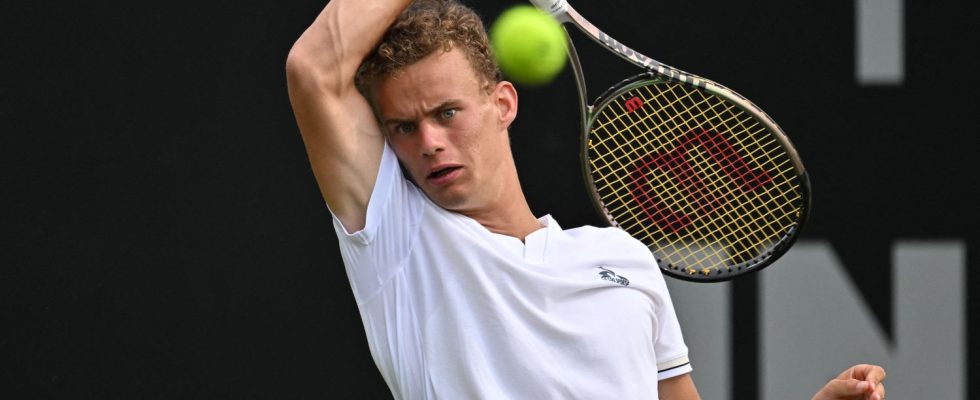The tournament which brings together the eight best tennis players under the age of 22 of the season begins Tuesday, in Jeddah (Saudi Arabia), with its own specificities.
Published
Update
Reading time :
3 mins

After the Masters meeting in Turin, won by Novak Djokovic on November 19, it’s time for the youth. The eight best players under 22 of the season compete in a final tournament, the Next Gen ATP Finals, in Jeddah (Saudi Arabia), between November 28 and December 2. A real springboard for the young generation, the tournament is also the ATP laboratory for testing new rules. We take stock of the specifics of the 2023 edition.
Son and Van Assche in pole position
For the first time since the creation of the tournament in 2017, two French people are entered: Arthur Fils and Luca Van Assche. In the absence of Carlos Alcaraz (2nd in the ATP) and Holger Rune (8th), qualified for the Masters, and the withdrawals of Ben Shelton (17th) and Lorenzo Musetti (27th), the French have a good card to play . Respectively 36th and 70th in the world, they are the highest ranked players in the ATP. They will be accompanied by Dominic Striker, semi-finalist in 2022, Flavio Cobolli, Luca Nardi, Alex Michelsen, Hamad Medjedovic and Abdulah Shelbayh, Jordanian player invited by the ATP.
No ATP points awarded
As with the ATP Finals, these players will first be divided into two groups, as the tournament begins with a group stage. The best two from each group will qualify for the semi-finals, for a knockout phase. Unlike a classic competition, no ATP points are awarded. Players will therefore not have the opportunity to climb the world hierarchy.
Experimental rules
Like this particularity, the Next Gen ATP Finals has its own regulations. Played on courts without doubles lanes or line judges, matches are won in the best of five sets, but these are limited to four games, with possible tie-breaks at 3-3. There is also no advantage. At 40A, the next point is decisive and the serving player can choose his side. To make matches shorter, changing sides after the first game of a set is abolished. Between two sets, players can also only sit for 90 seconds compared to 120 seconds normally.
To these rules, already present during previous editions, new experiences will be added in 2023. Between the first and second serves, players will only have 8 seconds (compared to 25 in classic ATP tournaments and 20 in Grand Slams). ). Above all, there will be no more warm-up on the pitch, enough to make the players react. “There are some nice rules, like the audience is allowed to move. No warm-ups, it’s confusing, but I’ll try to do my best.”Arthur Fils told AFP.
A focus on data
The sixth edition of the tournament, organized for the first time outside Milan, will also be focused on data. Each player will be able to view their biometric data on a connected device during their match. A new index will also capture each player’s physical exertion, while coaches will be able to access video footage and match data in real time. Finally, a competition entitled “Basecamp” is organized on the sidelines of the tournament. It will measure the skills and physical conditions of players through a series of tests.
